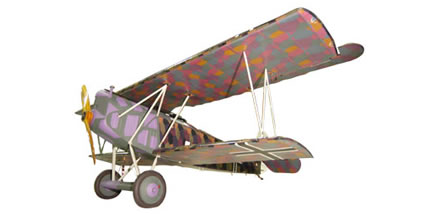Fokker D.VII
| Serial No: | 8417/18 |
| Period: | WWI |
| Reference: | 75/A/804 |
| Museum: | London |
| Location: | Hangar 2 |
| On Display: | Yes |
The Fokker D.VII was the equal of, if not better than, the British SE5s, Camels and French SPADs and is considered to be one of the outstanding fighters of the First World War. It was so successful that it was the only aircraft to be singled out by the Allied Powers in the Armistice Agreement section which detailed war material to be handed over:
‘In erster Linie alle Apparate D.VII’ (‘especially all first-line D.VII machines’).
Late in 1917 design work began on an aircraft which could win back for the Germans dominance over Allied fighters on the Western Front. The prototype was sent to Berlin’s Adlershof airfield for trials in January 1918 together with thirty competing aircraft. The D.VII won and was put into mass production at three different factories including two belonging to Fokker’s great rival Albatros.
The success of the D.VII lay in its handling characteristics. Unlike the British Camel it was fairly easy to fly and was said to turn a mediocre pilot into a good one. Forty-five German fighter units received these agile machines during 1918 but it is doubtful that all were completely re-equipped. Most of the late First World War German aces flew the type.
What makes this a milestone aircraft?
At a time when Allied aircraft were still largely made of wood the Fokker D.VII introduced a welded steel tube fuselage frame a concept which was not copied by other countries for some years. Using mass production techniques pioneered in the American automotive industry the Germans attempted to turn out as many of these first-class fighters as possible. Its qualities were so admired by the Allies that in the Treaty of Versailles it was the only item of military equipment mentioned by name to ensure the entire stock was passed to the victors.”






